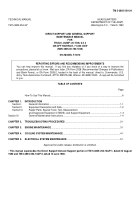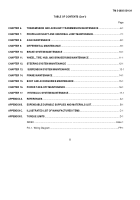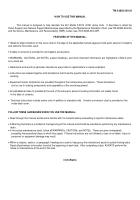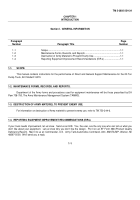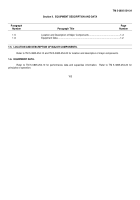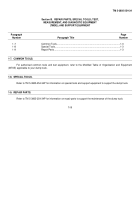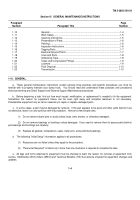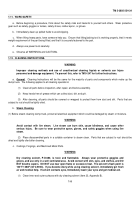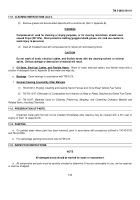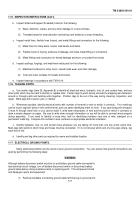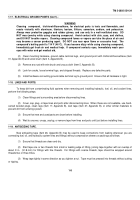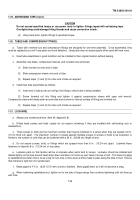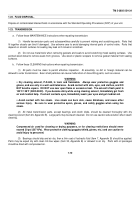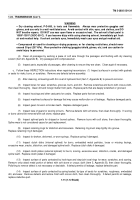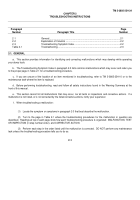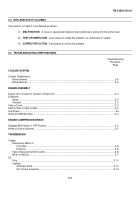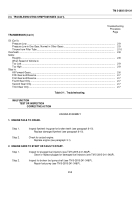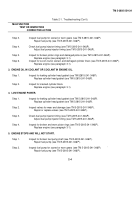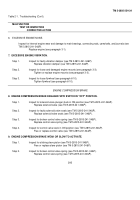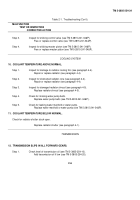TM-5-3805-254-34 - Page 16 of 727
TM 5-3805-254-34
1-17.
ELECTRICAL GROUND POINTS (Con’t).-
WARNING
Cleaning
compound,
trichlorotrifluoroethane, for electrical parts is toxic and flammable, and
reacts violently with aluminum, titanium, barium, lithium, samarium, sodium, and potassium.
Always wear protective goggles and rubber gloves, and use only In a well-ventilated area.
DO
NOT wear jewelry while using cleaning compound.
Avoid contact with skin, eyes, and clothes,
and DO NOT breathe vapors.
Cleaning compound fumes or vapors can take the place of air and
may become a cancer producing agent.
DO NOT use near open flame or excessive heat.
The
compound's boiling point Is 114°F (46°C).
If you become dizzy while using cleaning compound,
Immediately get fresh air and medical help.
If compound contacts eyes, Immediately wash your
eyes with water and get medical aid,
(2)
Clean mounting hardware, ground cable terminal lugs, and ground point with trichlorotrifluoroethane (Item
31, Appendix B) and scrub brush (Item 3, Appendix B).
(3)
Remove any rust with wire brush and crocus cloth (Item 5, Appendix B).
(4)
Look for cracks, loose terminal lugs, and stripped threads.
Replace any defective parts.
(5)
Install hardware connecting ground cable terminal lug to ground point.
Ensure that all hardware is tight.
1-18.
LINES AND PORTS.
To keep dirt from contaminating fluid systems when removing and installing hydraulic, fuel, oil, and coolant lines,
perform the following steps:
(1)
Clean fittings and surrounding area before disconnecting lines.
(2)
Cover, cap, plug, or tape lines and ports after disconnecting lines.
When these are not available, use hand-
carved wooden plugs, clean rags (Item 17, Appendix B), duct tape (Item 27, Appendix B), or other similar materials to
prevent dirt from entering system.
(3)
Ensure that new and used parts are clean before installing.
(4)
Wait to uncover, uncap, unplug, or remove tape from lines and ports until just before installing lines.
1-19.
ANTISEIZING TAPE.
New antiseizing tape (Item 26, Appendix B) may be used to keep connections from leaking whenever you are
connecting fuel, oil, and hydraulic system lines and fittings without compression sleeves or packings as follows:
(1)
Ensure that threads are clean and dry.
(2)
Start tape one or two threads from small or leading edge of fitting, joining tape together with an overlap of
about X in.
(3.18 mm) for fittings with fine threads.
For fittings with coarse threads, tape should be wrapped around
threads two or three times.
(3)
Wrap tape tightly in same direction as you tighten a nut.
Tape must be pressed into threads without cutting
or ripping.
1-8
Back to Top

